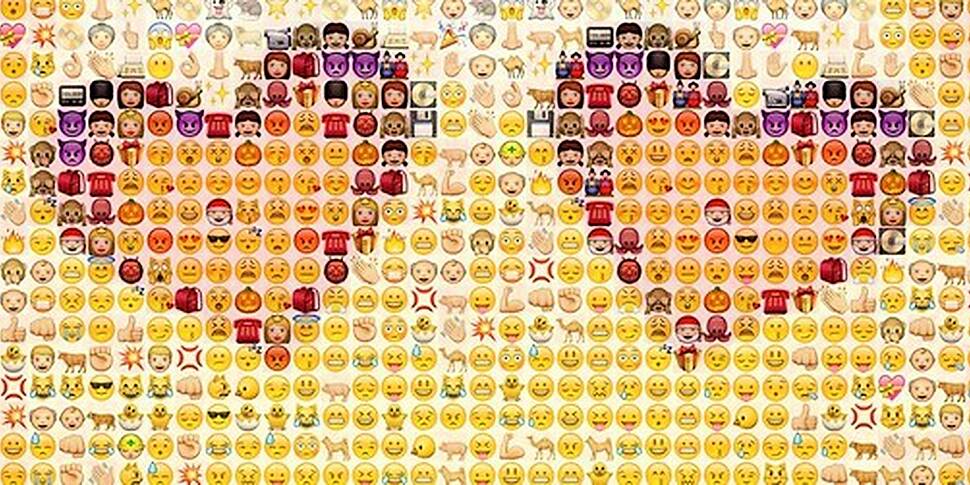Since it launched in Japan in 1999 as a sexy way to send pager messages, emoji has seen a meteoric rise in popularity, almost singlehandedly silencing the LOL, one winky face at a time. Linguists reckon that at least four out of five of us are peppering our texts with the little yellow dots and fabulously over-the-top posing woman in the red dress, creating a near universal language that bridges the normal linguistic divide.
There are those who worry that an anthropromorphised pile of excrement signals a dumbing down of written language and interpersonal communication. These people are wrong, because emoji’s role in a sentence is to expand and ornament meaning, not replace words.
Created by Shigataka Kurita for the NTT DoCoMo telecommunications giant, emoji started life as a 12 pixel by 12 pixel icon, designed to portray ideas, emotions and items inherent in the Japanese way of life. Ever wondered why there’s a white flower stamp in your emoji options and no, say, pint of Guinness? It’s because when Japanese school children complete their homework with nerdy Nipponese excellence, their teachers stamp their copies with a white flower.

The flower stamp emoji you've never used
The word itself is a compound noun, e in Japanese (sort of) means ‘picture’, while moji is ‘character’. Their inclusion into western communication is a direct result of their adoption by the Unicode Consortium – an international standardisation body which decided which and how written words across all languages can be reproduced online. Currently the consortium has released the codes for 722 different emoji, but we’ll be welcoming another 38 with clinking glasses within the next 12 months, two champagne flutes included. But there’s plenty more where the bacon and disco-dancing man come from, with as many as 3000 in development.
When it comes down to defining communication, there are a number of things that need to be ticked off the linguistic shopping list before we can call something a language. First and foremost is the word, because without it, we’ve got nothing. Then comes grammar, the framework we use to place words in order to add nuance to our meaning, expanding who’s doing what when.
But there is a lot more to language than just words and rules; when we talk, we use gesture, tone, speed, pronunciation, visual cues, maybe even spittle to add richness to our meaning. And emojis, in a world where every three months the number of words sent in text messages is equal to the entire number of words that has ever been printed in the history of man, add an incredible sense of subtlety to our meaning – even if that subtlety is showcased by two dancing women kicking out their legs at a jaunty angle.
Emoji enhances our digital missives, fast becoming the most important form of interpersonal communication, in ways that bare words cannot. An angry face or one with hearts for eyes provides key visual cues to what would normally be inferred through vocal or physical ones.
There are many people out there who look on disdainfully at a tweet littered with these pictographic neologisms, who wonder if their quick integration into our written messages is symbolic of the growing laziness and apathy we have to hard work. A small pre-packaged yellow symbol is, after all, a lot easier to stick into a sentence than a string of words.
The answer is best summed up with the red-faced furious emoji. It is neither lazy nor frivolous to use the communication tools in your hand to best communicate exactly how you feel to the people with whom you’re communicating. It’s your birthright – human beings have been communicating with each other with images since we were sitting around in dank caves, unworried about our faltering battery lives.
And sometimes they’re just funny, and that’s okay too.
Pop Idle is a new weekly blog and segment produced for The Right Hook, in which James Dempsey tries to bring George up to speed with the murky world of modern pop culture. Tune in at 6.20pm every Friday, or listen back to the podcast here.









